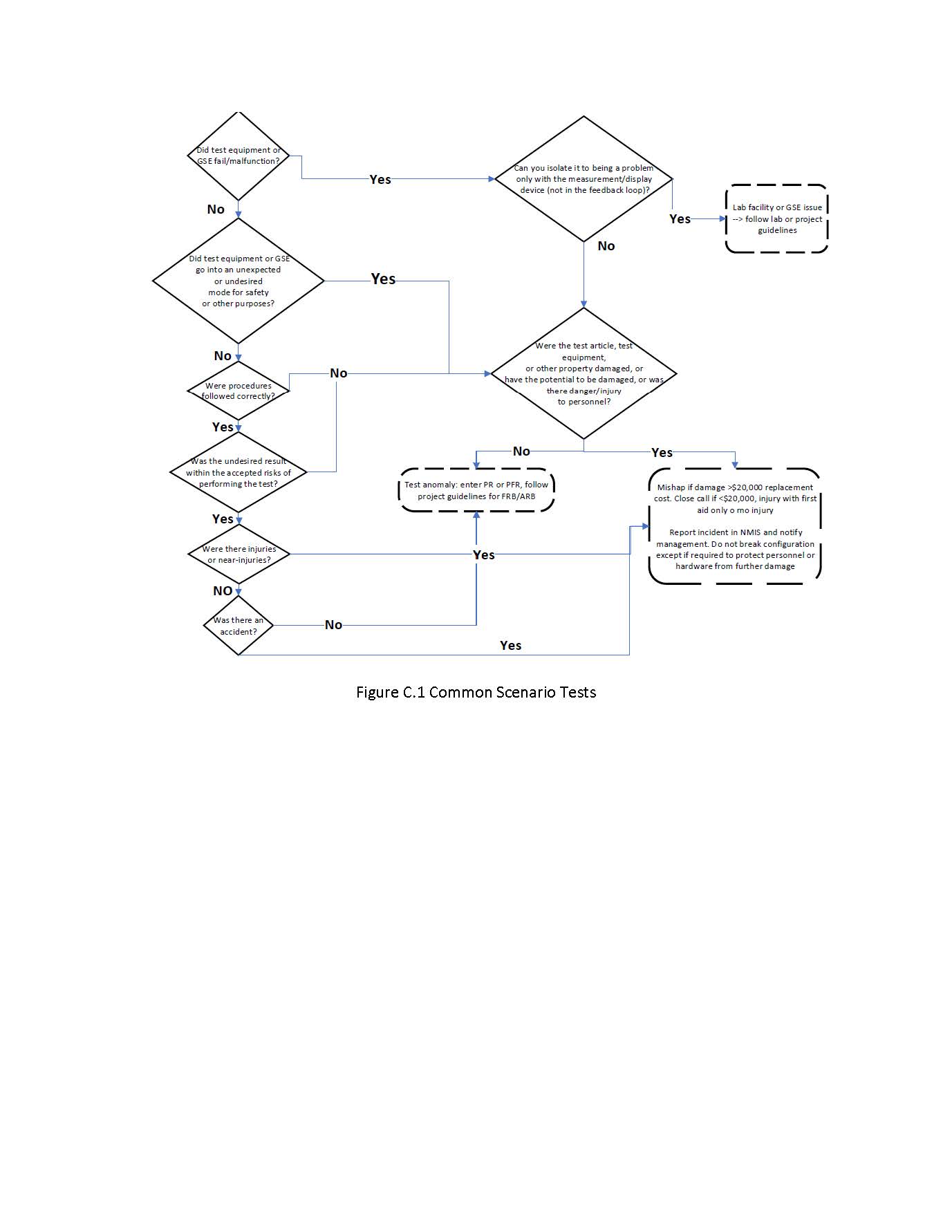
Procedural
Requirements
Effective Date: July 06, 2020
Expiration Date: July 06, 2025

|
NASA Procedural Requirements |
NPR 8621.1D Effective Date: July 06, 2020 Expiration Date: July 06, 2025 |
| | TOC | ChangeHistory | Preface | Chapter1 | Chapter2 | Chapter3 | Chapter4 | Chapter5 | Chapter6 | Chapter7 | Chapter8 | Chapter9 | AppendixA | AppendixB | AppendixC | AppendixD | AppendixE | AppendixF | AppendixG | AppendixH | AppendixI | AppendixJ | ALL | |
C.1 NASA performs extensive testing of hardware to assure that any failures that occur will happen when they are least impactful and/or least costly to address. Over the past few decades there has been substantial growth in access to space and hosting opportunities, which are much less costly than in the past. Subsequently, extensive amounts of testing and technology maturation can happen on-orbit, so space is often part of the testing environment. Space test platforms can include, but are not limited to, CubeSats, SmallSats, ISS payloads, or hosted instruments. Occasionally, there is no practical way to perform a test on the ground and obtain data of proper fidelity, so a space test would be the only choice. The determination of whether a test failure or test anomaly results in damage, degradation, or the end of a mission is straightforward and is based on whether the risk of the occurrence was expected and accepted by the project prior to performing the test (Figure 1).
C.1.1 Examples of acceptable risks from hardware damage during ground tests include (only if there is no collateral damage or personal injury - only hardware owned by the project is damaged):
(1) Testing was performed as designed, procedures were properly followed, reasonable assumptions were made about the test levels, and the test equipment performed as expected, but the hardware was not able to tolerate the test. Flow diagram in Figure 1.
(2) Test was intended to be a destructive test, taking the hardware to failure.
(3) Documentation was signed prior to the test saying that the specific damage was one expected outcome of the test.
C.1.2 Examples of acceptable outcomes from failures or degradation in space flight include (with stipulation that no unplanned environmental impact occurs, no damage to any type of space neighbors, and no elevated risk to the public through, e.g., orbital debris):
(1) The mission is governed either by NPR 7120.8 or is not under either NPR 7120.5 or NPR 7120.8 (also known as "do no harm") and the failure is not the result of negligence in operations. (If streamlined operations were a capability that was being proven, then this would not be considered negligence).
(2) The mission is a technology demonstration of any classification for which the failure was related to the technology itself.
(3) Documentation was signed prior to the pertinent on-orbit operation saying that the specific result was one expected outcome of performing the operation.
C.2 For both scenarios, the outcome would not be considered a NASA mishap, but the expectation would be that a proper failure review would occur to determine the causes and corrective actions to prevent recurrence and learn from the event.

| TOC | ChangeHistory | Preface | Chapter1 | Chapter2 | Chapter3 | Chapter4 | Chapter5 | Chapter6 | Chapter7 | Chapter8 | Chapter9 | AppendixA | AppendixB | AppendixC | AppendixD | AppendixE | AppendixF | AppendixG | AppendixH | AppendixI | AppendixJ | ALL | |
| | NODIS Library | Program Management(8000s) | Search | |
This document does not bind the public, except as authorized by law or as incorporated into a contract. This document is uncontrolled when printed. Check the NASA Online Directives Information System (NODIS) Library to verify that this is the correct version before use: https://nodis3.gsfc.nasa.gov.